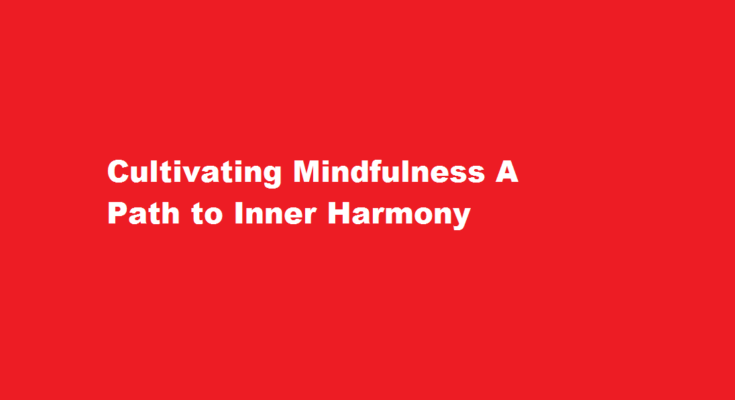Introduction
In the hustle and bustle of our modern lives, finding moments of calm and self-awareness can seem like a distant dream. However, by incorporating mindfulness into our daily routines, we can reconnect with the present moment and experience a myriad of physical, mental, and emotional benefits. This article explores the transformative practice of mindfulness, offering practical tips and insights on how to incorporate it into our lives for greater peace and well-being.
Understanding Mindfulness
Mindfulness, derived from ancient Buddhist traditions, is the practice of intentionally paying attention to the present moment with non-judgmental awareness. It involves observing our thoughts, emotions, and bodily sensations without becoming entangled in them. By fostering a state of mindful awareness, we can cultivate a deeper understanding of ourselves and the world around us.
The Benefits of Mindfulness
Research has shown that practicing mindfulness regularly can bring about a wide range of benefits. It reduces stress and anxiety, enhances emotional resilience, and improves focus and cognitive abilities. Additionally, mindfulness has been found to promote better sleep, boost creativity, and foster healthier relationships. By embracing mindfulness, we can tap into our inner potential and experience greater overall well-being.
Incorporating Mindfulness into Daily Life
- Mindful Breathing Begin by focusing on your breath, feeling the sensations as you inhale and exhale. Whenever your mind wanders, gently bring your attention back to your breath. This simple practice can be done anytime, anywhere, and serves as an anchor to the present moment.
- Mindful Eating Pay close attention to the texture, taste, and aroma of your food. Slow down and savor each bite, fully engaging your senses. This practice not only enhances the enjoyment of your meal but also promotes mindful eating habits and gratitude.
- Mindful Movement Engage in physical activities such as yoga, tai chi, or walking meditation with full awareness. Notice the sensations in your body, the rhythm of your movements, and the connection between mind and body.
- Mindful Technology Use Set boundaries and take breaks from digital devices. When using technology, be intentional and fully present, rather than mindlessly scrolling or multitasking.
- Mindful Reflection Dedicate a few minutes each day to reflect on your experiences and emotions. Write in a journal, meditate, or engage in self-reflection to foster self-awareness and insight.
Overcoming Challenges
Developing a mindfulness practice may encounter challenges such as a wandering mind or difficulties in finding time. However, patience and consistency are key. It is essential to approach the practice with kindness and non-judgment, acknowledging that distractions are a natural part of the process. Start with small steps and gradually increase the duration of your mindfulness sessions as you build your focus and resilience.
Frequently Asked Questions
What are the 5 C’s of mindfulness?
A companion to Mindfulness Practices, this research-backed guide outlines how to teach self-regulation by fostering the five Cs of social-emotional learning and mindfulness: consciousness, compassion, confidence, courage, and community.
What are the 3 mindfulness skills?
So when we’re being mindful, we observe, describe, and participate in whatever we’re experiencing in the present moment. “How” Mindfulness Skills involve how we practice mindfulness. In DBT, there are three “how” mindfulness skills: nonjudgmentally, one-mindfully, and effectively.
Conclusion
Mindfulness is a powerful tool that allows us to cultivate a deeper connection with ourselves and the world. By incorporating mindfulness into our daily lives, we can experience enhanced well-being, reduced stress, and improved overall happiness. With practice and perseverance, we can develop a lasting mindfulness habit that transforms the way we think, feel, and interact with the world around us. Embrace the present moment, for it is in the now that true peace and fulfillment reside.
Read Also : Mastering Archery A Comprehensive Guide to Effective Practice



